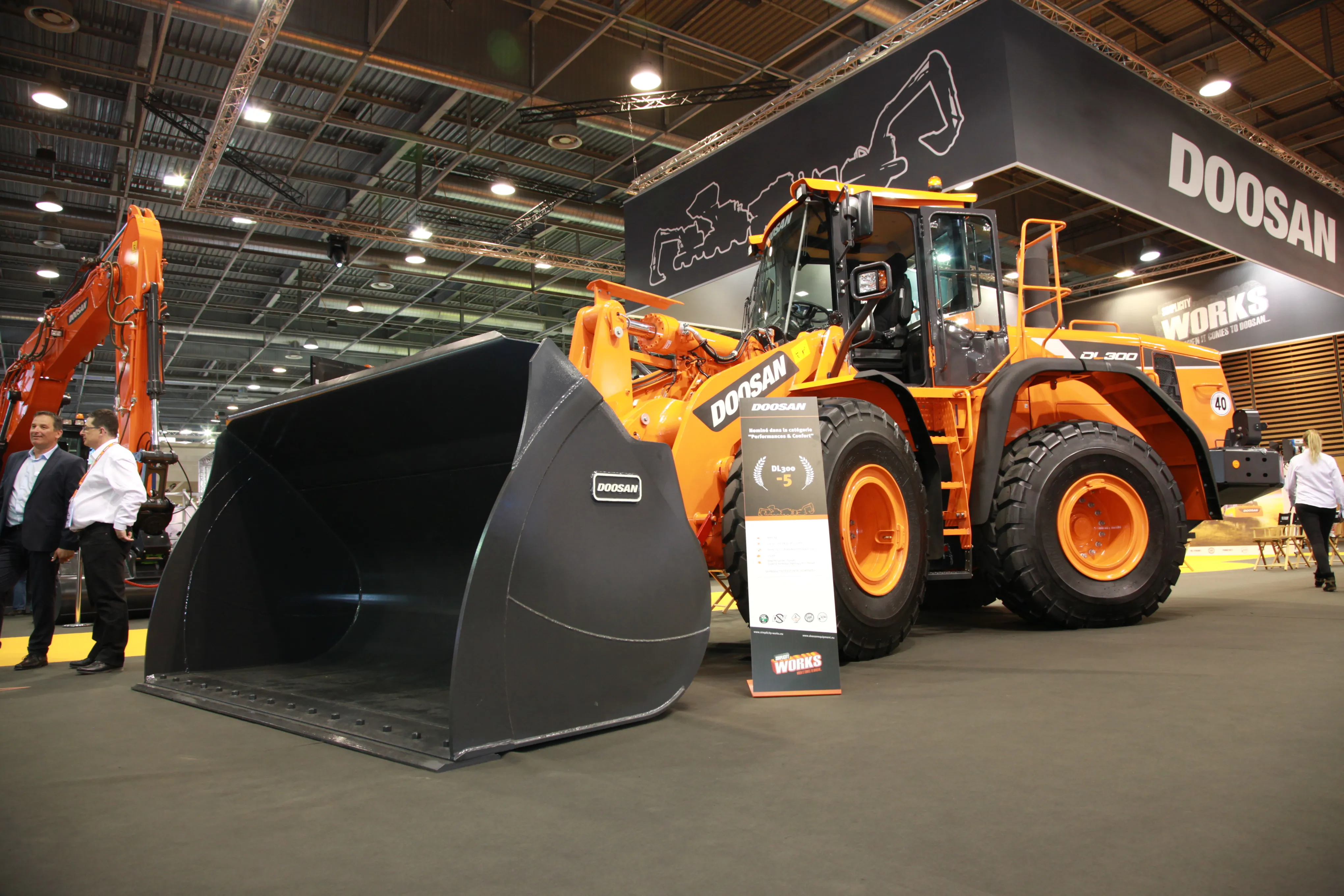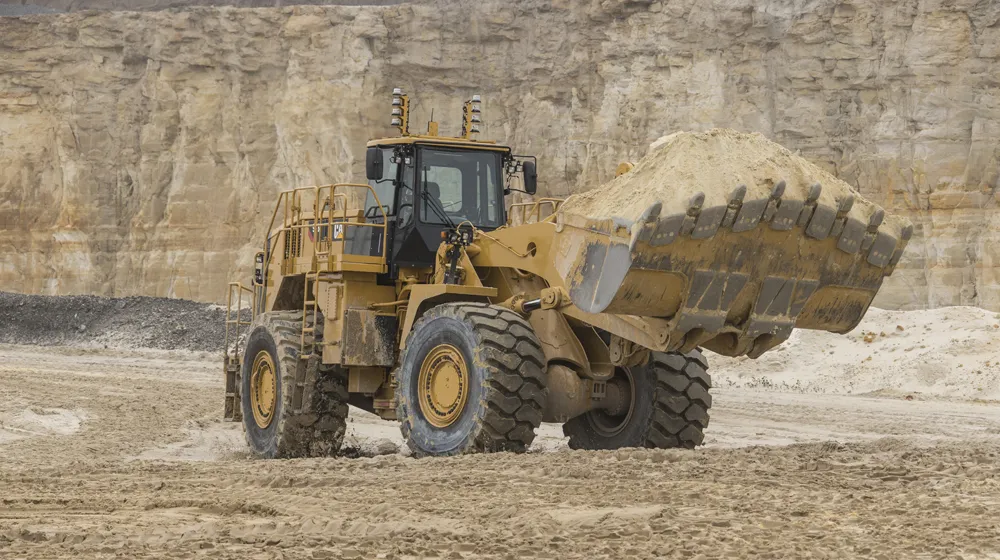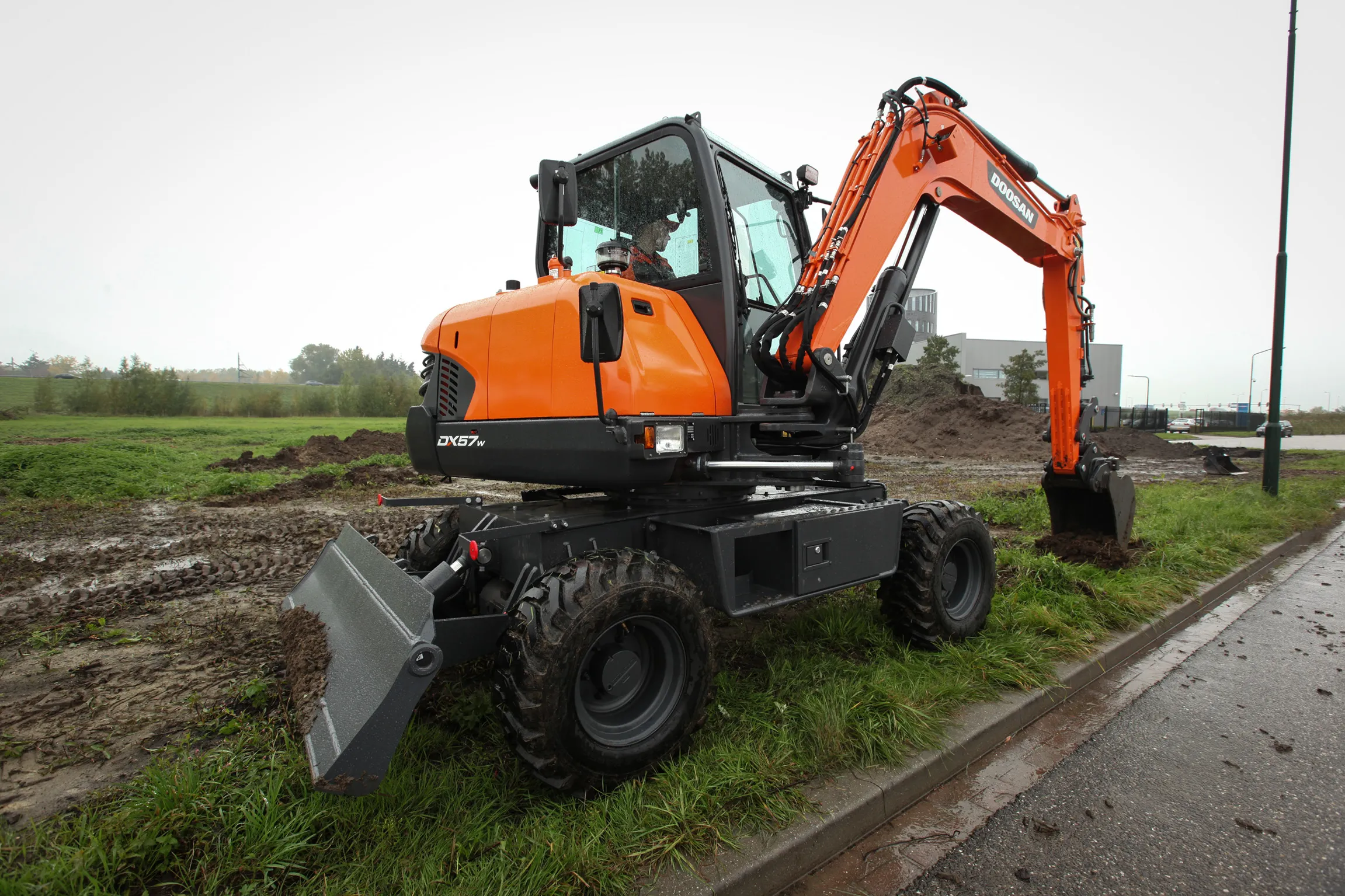Safety is a key design element for the new HL970 and HL980 wheel loaders from Hyundai Heavy Industries Europe.
For added safety, the machines have large access steps to the cab, convenient grab handles and upper guard rails near the engine compartment. The larger cab improves cab entry and exit.
Ergonomically positioned operator switches, controls make it easier to quickly access critical functions. An improved rear view camera delivers higher resolution and enhanced night-time visibility.
February 5, 2016
Read time: 2 mins

Safety is a key design element for the new HL970 and HL980 wheel loaders from 236 Hyundai Heavy Industries Europe.
For added safety, the machines have large access steps to the cab, convenient grab handles and upper guard rails near the engine compartment. The larger cab improves cab entry and exit.
Ergonomically positioned operator switches, controls make it easier to quickly access critical functions. An improved rear view camera delivers higher resolution and enhanced night-time visibility.
In addition to being more fuel-efficient, the new HL series feature an automatic engine shutdown when it enters into an ‘idling state’. Operators can select operating mode and idling time depending on work environments which improves its efficiency even further.
The Eco Pedal gives feedback via increased pedal pressure to alert the operator stay within the engine’s economical operating range.
The electro-hydraulic fingertip control, available on select models, reduces operator fatigue. The colour-changing Eco Gauge provides the operator with a visual reference of fuel efficiency, total fuel consumption and average fuel data. The machines have a five-speed automatic transmission with a lockup clutch (HL955-HL980) that boosts efficiency and minimises heat.
The HL Series also feature a ‘travel speed limit control’ where the operator can limit the maximum travelling speed within a range of 20kph to maintain optimal effectiveness under all working conditions.
For added safety, the machines have large access steps to the cab, convenient grab handles and upper guard rails near the engine compartment. The larger cab improves cab entry and exit.
Ergonomically positioned operator switches, controls make it easier to quickly access critical functions. An improved rear view camera delivers higher resolution and enhanced night-time visibility.
In addition to being more fuel-efficient, the new HL series feature an automatic engine shutdown when it enters into an ‘idling state’. Operators can select operating mode and idling time depending on work environments which improves its efficiency even further.
The Eco Pedal gives feedback via increased pedal pressure to alert the operator stay within the engine’s economical operating range.
The electro-hydraulic fingertip control, available on select models, reduces operator fatigue. The colour-changing Eco Gauge provides the operator with a visual reference of fuel efficiency, total fuel consumption and average fuel data. The machines have a five-speed automatic transmission with a lockup clutch (HL955-HL980) that boosts efficiency and minimises heat.
The HL Series also feature a ‘travel speed limit control’ where the operator can limit the maximum travelling speed within a range of 20kph to maintain optimal effectiveness under all working conditions.








